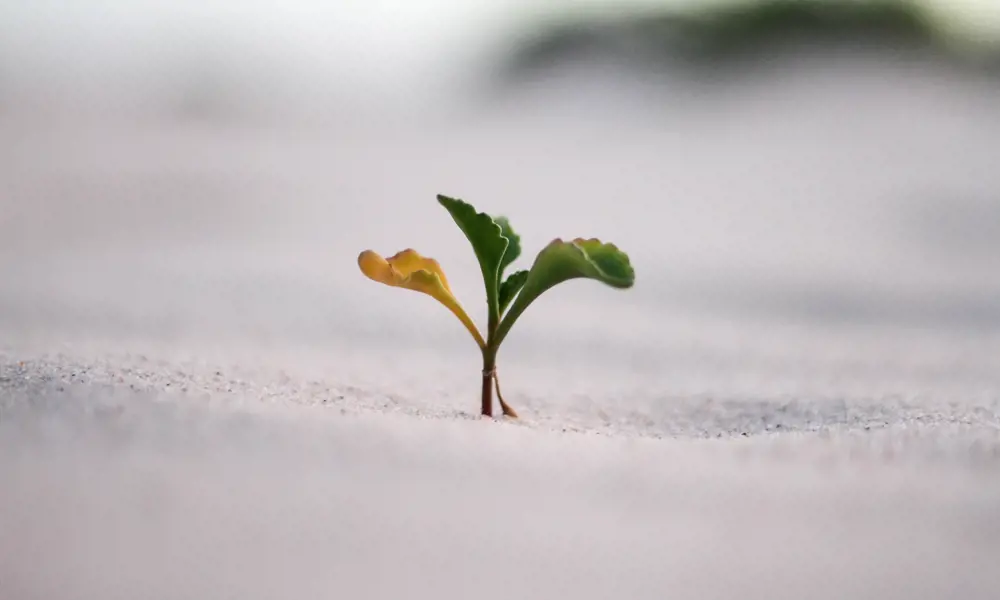
A champion of the green economy
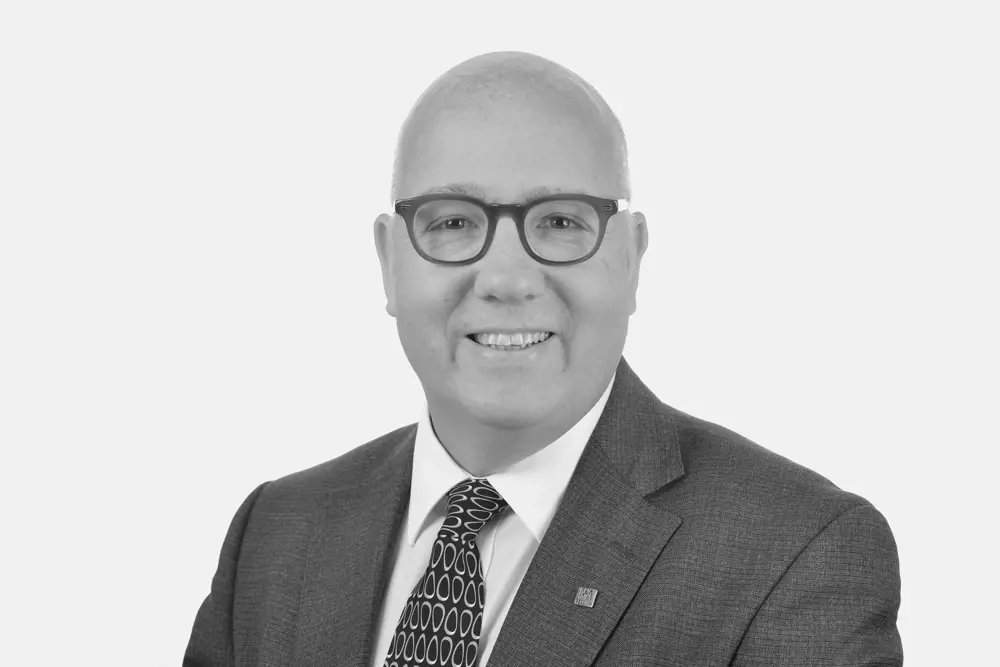
Professor Simon Pollard OBE FREng remembers being impressed by the 1972 report The Limits To Growth. This seminal analysis on the use of resources was an early advocate of the role of recycling in economic growth. The idea that we should make better use of resources influenced his choice of a career as an environmental engineer. For a while, Simon was one of a small community of engineers who saw the circular economy as essential for the survival of the planet and those of us who live on it. Today, sustainability has permeated economic activities far beyond the world of engineering.
Simon’s path into environmental engineering began as an early school leaver. His chemistry teacher was “an entertaining practitioner who delighted in trying out experiments in front of the class”, but that wasn’t enough to keep him motivated. He was, he says, restless at school and left at the age of 16 after responding to a job ad read out in class, which eventually led to a role as a technician working on thermoplastics for Raychem in Swindon. Simon says he learned a lot in the two years spent developing novel materials for the booming digital telecoms sector.
Simon describes the company as a “superb, ‘Silicon Valley-style’ crucible of innovation, led by charismatic entrepreneurial technologists”. The patent-hungry approach to R&D, where collaboration was what mattered, left an impression on Simon. As well as bench experience that was to prove invaluable, Raychem also gave him time to study for a Higher National Certificate in physical sciences, along with a company scholarship to go to university. Thanks to “a kindly admissions tutor willing to take a punt on a vocationally educated lad”, as he puts it, Simon returned to education as a chemistry undergraduate at Imperial College London, where his practical experience in the lab compensated for his lesser appetite for organic synthesis.
On graduating, Simon wanted to move back into technology. The rise of environmental engineering in academic circles had prompted Imperial to create the Department of Civil and Environmental Engineering, with Professor Roger Perry, Head of Environmental and Water Resource Engineering.
Simon was keen to “do something practical”. Perry offered Simon an industrial studentship working with Laporte Industries, the multinational chemicals group, in the emergent field of hazardous waste management. Thus began Simon’s move into environmental protection and sustainability.
Quick Q&A
From Edinburgh to Italy, Simon's creative inspirations...
What inspired you to become an engineer?
In my PhD years, the prospect of applying engineering know-how to public health and environmental protection.
Favourite project you worked on?
Hugely challenging, but working with government on characterising the environmental impacts of the foot and mouth and BSE crises in the 1990s.
What’s your advice to budding engineers?
Keep developing your skills, and network outside your own discipline to understand the perspectives of others.
Best bit of the job now?
Witnessing the passion that today’s young engineers have for making the world a better place.
Do you have a favourite tech gadget?
I cherish a fabulous modern corkscrew that is a delight
to use.
Most impressive bit of engineering to look at?
The delightful Forth Bridge, Edinburgh.
What do you do in your spare time?
I enjoy the landscape of north Norfolk and the food of Southern Italy.
Tackling waste
Industry came under increasing pressure in the 1990s to clean up its act, literally. Simon’s PhD tackled “particularly problematic industrial waste”. The process used to bleach edible oil created waste that had a habit of spontaneously igniting when dumped into landfill. In his PhD project, Simon used chemical principles in an engineering setting to develop a patented process that converted the waste into a usable product.
For Simon this was an early foray into the circular economy and more research into turning waste into useful materials: “It was in the era of waste minimisation. Companies were looking afresh at all their industrial wastes and seeing how they could be minimised, and in some cases reused.”
Thirty years ago, these concepts had yet to become a natural component of industrial thinking. A lot has changed since then. Simon’s own thinking developed when a postdoctoral research opportunity came up in Canada. Professor Steve Hrudey, one of Perry’s former students, ran the environmental health programme at the University of Alberta. He was supporting Alberta’s clean-up of contaminated land in the province’s former railway yards and wood preserving sites.
The challenge was to devise the most effective ways to reduce the risks to health and the environment. “Working with Steve gave me a superb foundation into the preventative management of risk,” says Simon. Risk management entails assessing risks and, where necessary, intervening before impacts cause harm to public health or the environment.
Simon began to implant this thinking on his return to the UK. In 1994, after a short period teaching environmental chemistry at the University of Edinburgh, he put his academic career on hold. He drew on his experience working in contaminated land by joining a consulting business that had won the contract to clean-up the former Ravenscraig steelworks, south of Glasgow, which had ceased steel-making in 1992. This was a massive remediation project, and as he puts it, a “formative two years” learning about sales, client care and corporate risk.
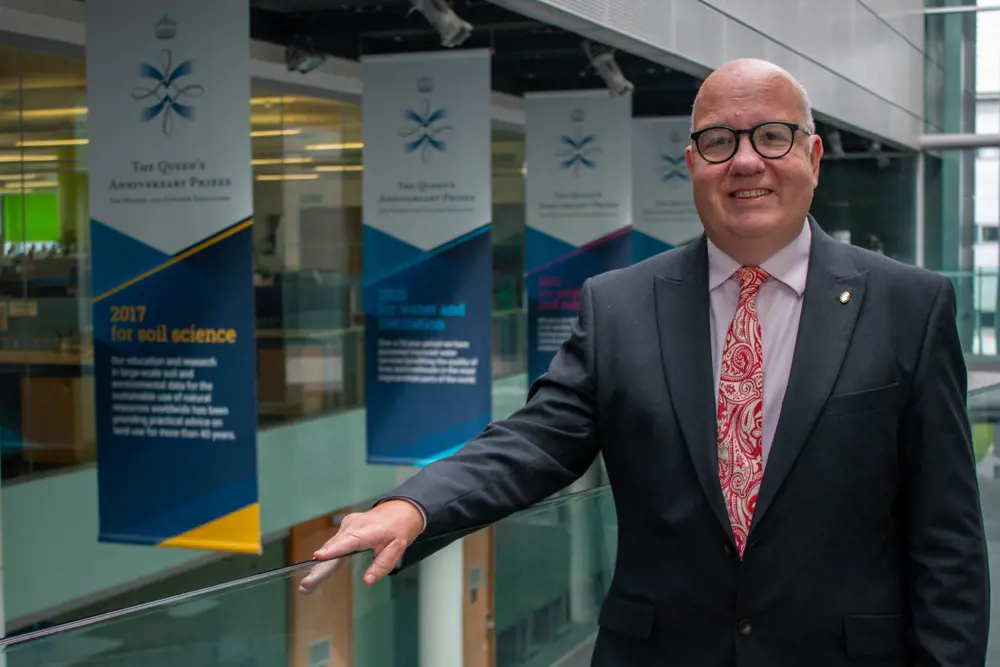
The influential and best-selling report The Limits to Growth set Professor Simon Pollard on the road to sustainability and the circular economy as driving forces in his career in environmental engineering. As he sees it “the engineering profession has brought sustainability centre stage in a way in which other professions have sometimes struggled to do”
Risk analysis and policymaking
Reflecting on his career, Simon identifies times when it felt more of a ‘random walk’ and others when his journey was more purposeful. In 1996 that journey took him into the public sector with an invitation to join the newly formed Scottish Environment Protection Agency. Two years later he moved on to the national stage and to Westminster to run the national risk analysis team at the Environment Agency (EA), then just two years old.
These were early days not just for the EA but also for new thinking in environmental policymaking. Policing the country’s water system, from supply through to flood management, was one of the organisation’s main tasks. “This was a career opportunity to form a team of risk analysts from scratch,” says Simon. This was happening at the same time as the EA was grappling with BSE and foot and mouth crises, major flooding events, and contaminated land, while also working on regulation of hazardous and radioactive waste.
Simon’s new challenge demanded a subtle blend of engineering expertise and political skills. The task involved developing technical and regulatory tools and approaches to support large national-scale projects where environmental and engineering risks were at the fore. It was also an invitation to contribute to new thinking on public risk management, “all at a time when successive governments were dealing with the deregulation agenda, cost-sharing for the management of public risk, and the design of risk-based regulation”.
Simon says that five years at the EA gave him hugely valuable insights into the relationship between science and policy. The organisation’s nature and remit meant working with practical, pragmatic people who could identify and get the evidence needed to inform regulatory decisions. “They had contractors, researchers and academics input to decisions, but they were extremely adept at making decisions around industrial sites, radioactive waste management, for example, and hazardous waste facilities, where national decisions were being made. I was very lucky to work there.”
Cranfield's pioneering research
💧 On water and beyond
Water utilities supply one of life’s essentials. Their product has to be safe, wholesome and affordable. As Simon says, if things go wrong, utilities can’t issue a product recall. To ensure that safety, Cranfield’s research laid the foundations for the sector to adopt risk management as a formalised business process.
Research on all aspects of water systems run through Simon’s career as an environmental engineer. He joined Cranfield University in 2002 and ran the School of Water, Energy and Environment for seven years. Cranfield even has its own sewage treatment facilities. “If you want to develop something at pilot scale, with the fundamental science and engineering behind it, then Cranfield is the place to do it.”
The university’s engineering expertise includes the Water Science Institute and the Centre for Water, Environment and Development. These combine research and postgraduate teaching in engineering, environmental risk analysis and governance, with about 50 PhDs and 25 MScs.
With its focus on graduate education, Simon points to the number of Cranfield alumni in the water industry. To bring these people together, the university created a risk manager network to enable collaboration between utility executives and regulators on risk.
The water industry is also fertile territory for Simon’s interest in the circular economy. “A modern view of wastewater is as a resource, in terms of nitrogen and phosphorus, and the potential to produce gas,” he explains. “Most water utilities have considerable energy bills, as you can imagine, and carbon footprints as a result. So they’re interested in any opportunity to reduce carbon and improve renewables on site.”
At a broader level, he adds, “We’ve looked at some of the various formats for producing hydrogen at scale.”
Waste and water management
Simon enjoyed working at the EA but missed teaching, so in 2002 moved to Cranfield University as a research professor. He subsequently became Head of Department and, in 2014, Pro-Vice-Chancellor of the School of Water, Energy and Environment, which represented a summation of Cranfield’s sustainability expertise. The university had long been active in engineering aspects of water supply and management (see ‘Water research’). A series of research contracts for the US Water Research Foundation followed that drew heavily on Simon’s experience in risk, regulation and public health protection.
As Simon sees it, the UK is well placed to play a role in this important international sector. “We’ve got a vibrant water research community.” With universities such as Cranfield, the UK is also training the next generation of process and environmental engineers. Simon has also worked with senior engineers in the water sector beyond the UK, including Canada, Australia, the US, and Portugal.
“Research councils have always supported water and wastewater engineering. Also, I think, the foresight to understand that it’s not just about the systems and the engineered systems, but management and people capability also play a large part in all of this.”
On joining Cranfield, Simon also started what has become an influential programme of research on environmental risk. The Department for Environment, Food and Rural Affairs (DEFRA) wanted to compare risks across its broad portfolio of responsibilities, whether it was veterinary issues, air pollution, pesticides in the environment, or radioactive waste. As part of this work, the research councils and DEFRA put out a call for risk expertise. “They established a collaborative programme with the research councils and called for a national risk champion,” Simon explains. “I was lucky enough to win that.”
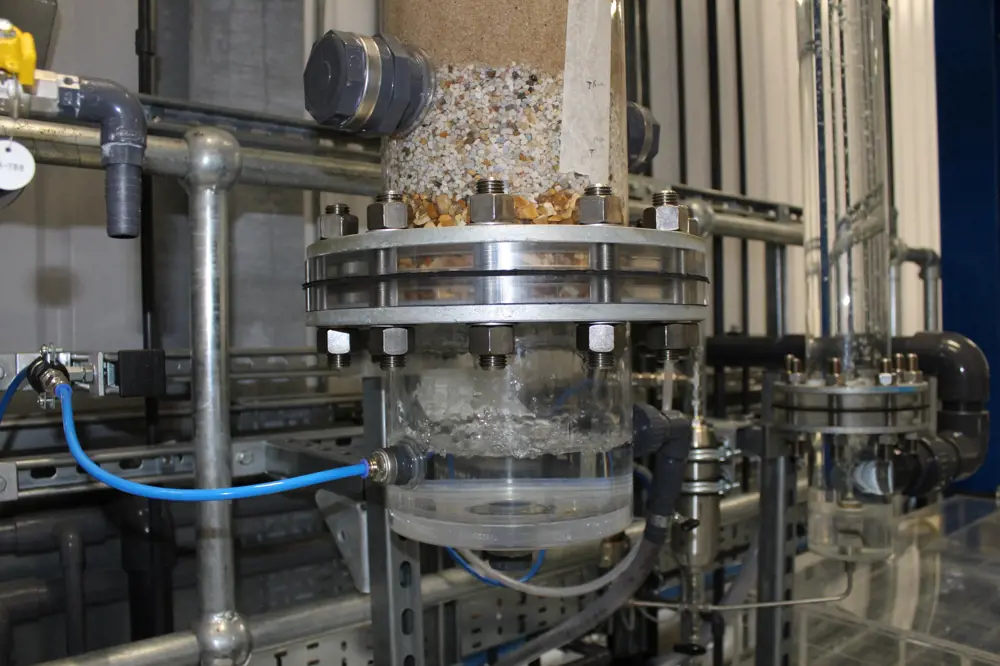
With about 75 PhD and MSc researchers, Cranfield University is a leading centre for R&D in water engineering. It has attracted a steady flow of funds over many decades from research councils, government agencies and the water industry. With unique pilot-scale water and wastewater engineering laboratories, alongside the university’s own sewage treatment works, researchers can evaluate engineering processes to be evaluated with authentic wastewaters © Cranfield University
Given the multidimensional nature of risk, and range of perspectives that people have, explaining risk management can be a challenge. Reflecting over years of experience, Simon’s preference is to start simple and build in complexity, only as it adds value to the decision on how to manage risk. “For environmental risks, one has a source of a hazard with the potential to cause harm to something we value, and a pathway of exposure. There are opportunities to reduce hazards, but most of the intervention we do in engineering terms is in managing the exposure pathway to isolate the hazard from the asset that we value.”
Since then, Simon has had a leading role in the implementation of risk-based regulation. This meant working with government and industry on, as he puts it, “the proportionate use of risk-based decision-making”. As a part of this activity, Simon worked with DEFRA’s then Chief Scientific Adviser, Professor Sir Robert Watson CMG FRS, taking forward some of the thinking on risk that he had started at the EA.
One target for this work was the water sector. “I became captivated by how the international water sector might improve its approach to risk and resilience. It needed to improve its governance of risk. That brought in not only the engineering side, but the policy and internal machinery that the sector has for governing risk across its portfolio.”
When looking for reasons for the industry’s current problems, Simon comes back to risk management. “You’ve got to know where the risks are. You’ve got to know how to manage your asset base with the investment that you choose or are allowed to put back in.” He hints that some of the current criticism misses the mark. For example, combined sewer overflows may be blamed for releasing raw sewage into rivers, but they also protect the public from sewage backing up into houses. On the positive side, Simon underlines the role of the European Water Framework Directive. “It’s a shame to see the perception of that being undone. There’s a job to be done to win back the trust of the public.”
Career timeline and distinctions
Studied chemistry at Imperial College London, 1984. Gained a PhD in environmental engineering at Imperial College London, 1990. Senior consultant remediating the former Ravenscraig steelworks, Glasgow 1994–1996. Policy adviser with the Scottish Environment Protection Agency, 1996–1998. Head of Risk Analysis and Policy, Environment Agency, 1998–2002. Joined Cranfield University as Professor and Director of the Integrated Waste Management Centre, 2002. Fellow, International Water Association, 2012. Pro-Vice-Chancellor, School of Water, Energy and Environment, Cranfield University, 2014–2021. Fellow, Royal Academy of Engineering, 2017. Pro-Vice-Chancellor International, Cranfield University, 2018–present day. Appointed a Member of the Order of the British Empire, 2020.
In pursuit of sustainability
The combination of engineering, environmental protection and risk analysis is relevant well beyond water, especially in an era when the world is grappling with climate change. There is a growing acceptance that engineering is crucial in the pursuit of sustainability.
Fortunately, engineers can turn to new tools as they address these challenges. While much of the world is getting worked up about the threat of artificial intelligence (AI) to humankind, Simon is keen to explore the possible benefits. “One of the challenges of environmental risk assessment is the sheer number of exposure pathways between hazardous agents and the people, assets and ecosystems that we seek to protect from harm,” he explains. “Artificial intelligence offers the potential to analyse these interactions and their supporting evidence at far greater speed and clarity than we can currently.”
The world has caught up with that earlier analysis of the state of the planet that set Simon on the road to sustainability. The Limits to Growth, he says, was “a superb piece of work.” It may have taken time, but he sees signs of hope in new thinking about economics and resource management and the overwhelming rise of scientific evidence on climate change. “We’ve gone past a period of scientific uncertainty.” Even business has seen the point. “None of this is overnight, but the transitions are underway. There’s phenomenal support, I think, within the business community, but we can’t just slip back into short termism.”
Contributors
Michael Kenward OBE
Author
Keep up-to-date with Ingenia for free
SubscribeRelated content
Environment & sustainability
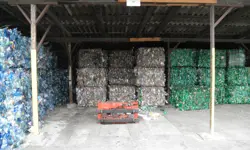
Recycling household waste
The percentage of waste recycled in the UK has risen rapidly over the past 20 years, thanks to breakthroughs in the way waste is processed. Find out about what happens to household waste and recent technological developments in the UK.
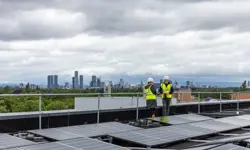
Upgrade existing buildings to reduce emissions
Much of the UK’s existing buildings predate modern energy standards. Patrick Bellew of Atelier Ten, a company that pioneered environmental innovations, suggests that a National Infrastructure Project is needed to tackle waste and inefficiency.
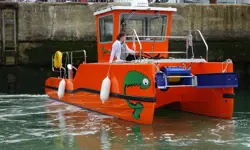
An appetite for oil
The Gobbler boat’s compact and lightweight dimensions coupled with complex oil-skimming technology provide a safer and more effective way of containing and cleaning up oil spills, both in harbour and at sea.
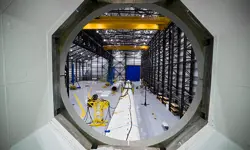
Future-proofing the next generation of wind turbine blades
Before deploying new equipment in an offshore environment, testing is vital and can reduce the time and cost of manufacturing longer blades. Replicating the harsh conditions within the confines of a test hall requires access to specialist, purpose-built facilities.
Other content from Ingenia
Quick read

- Environment & sustainability
- Opinion
A young engineer’s perspective on the good, the bad and the ugly of COP27

- Environment & sustainability
- Issue 95
How do we pay for net zero technologies?
Quick read

- Transport
- Mechanical
- How I got here
Electrifying trains and STEMAZING outreach

- Civil & structural
- Environment & sustainability
- Issue 95